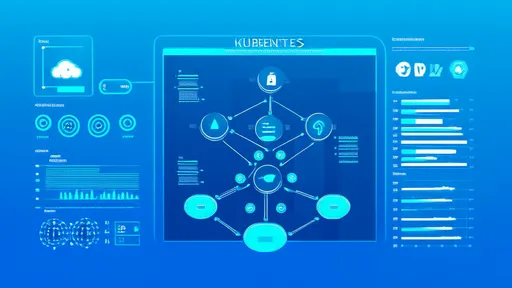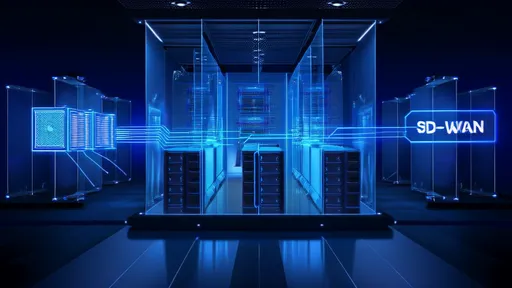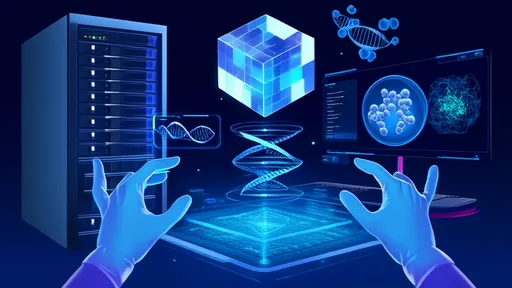In the ever-evolving landscape of artificial intelligence, a quiet revolution is taking place that promises to fundamentally reshape how machines understand the world. For decades, the field has been dominated by correlation-based approaches—powerful pattern recognition systems that excel at finding statistical relationships in data but fall painfully short when it comes to true understanding. The emerging discipline of causal machine learning seeks to change this paradigm, moving beyond mere correlations to uncover the actual mechanisms that drive phenomena in the real world.
The limitations of traditional machine learning have become increasingly apparent as these systems are deployed in critical domains. A model might accurately predict that people who carry lighters are more likely to develop lung cancer, but it completely misses the actual causal relationship—that smoking causes both behaviors. This distinction between correlation and causation isn't just academic pedantry; it represents the difference between systems that can truly reason about interventions and those that merely recognize patterns in historical data.
At the heart of causal machine learning lies a sophisticated mathematical framework developed over decades by researchers like Judea Pearl, who famously argued that current machine learning systems are stuck in what he calls the "rung of association." The causal revolution aims to lift AI to higher rungs of the ladder—those of intervention and counterfactual reasoning. This isn't merely an incremental improvement but a fundamental shift in how we conceptualize machine intelligence.
The practical implications of this shift are profound. In healthcare, causal models can help determine whether a treatment actually works rather than simply identifying that people who receive it tend to have better outcomes. In economics, they can distinguish between policies that genuinely stimulate growth and those that merely correlate with economic improvement. The applications extend to climate science, education, criminal justice, and virtually every domain where understanding why something happens matters as much as predicting that it will happen.
Implementing causal machine learning requires new approaches to both model architecture and data collection. Unlike traditional models that thrive on massive datasets, causal models often need carefully designed experiments or natural experiments that can simulate randomized controlled trials. Researchers are developing innovative techniques like instrumental variables, difference-in-differences designs, and regression discontinuity designs that allow causal inference from observational data—addressing one of the field's most significant challenges.
The technical machinery behind these advances includes causal directed acyclic graphs (DAGs), structural equation models, and counterfactual frameworks that enable machines to answer "what if" questions. These tools allow models to simulate interventions—asking not just what the data shows, but what would happen if we changed something in the system. This capability transforms machine learning from a passive observer of patterns into an active reasoner about possibilities.
Despite these exciting developments, significant challenges remain. Causal inference often requires assumptions that cannot be fully tested from data alone, introducing elements of human judgment into machine learning systems. The field must develop robust methods for quantifying uncertainty about these assumptions and communicating this uncertainty to decision-makers. Additionally, causal models typically require more sophisticated statistical thinking than correlation-based approaches, creating new educational demands for data scientists.
Ethical considerations take on new dimensions in causal machine learning. While these systems promise more fair and transparent decision-making by focusing on actual causes rather than proxies, they also raise complex questions about responsibility and accountability. If a model claims that changing a particular factor will cause a desired outcome, who is responsible when the intervention doesn't produce the expected result? The causal framing makes these questions of responsibility more explicit but doesn't necessarily make them easier to answer.
The business world is beginning to recognize the value of causal understanding. Companies that can accurately identify what actually drives customer behavior, rather than what merely correlates with it, gain significant competitive advantages. This understanding enables more effective marketing strategies, product development decisions, and operational improvements. The shift from correlation to causation represents a maturation of data science from a support function to a core strategic capability.
Looking forward, the integration of causal reasoning with other advanced AI techniques presents exciting possibilities. Combining causal models with deep learning could create systems that both recognize complex patterns and understand the mechanisms behind them. Reinforcement learning informed by causal models might develop more efficient exploration strategies by understanding which actions actually influence outcomes. These hybrid approaches could accelerate progress toward artificial general intelligence.
The scientific community's embrace of causal machine learning reflects a broader recognition that prediction alone is insufficient for many important applications. Scientists across disciplines are increasingly collaborating with computer scientists to develop causal methods tailored to their specific domains. This interdisciplinary approach is generating innovative solutions to long-standing problems while advancing the core methodology of causal inference.
Education and workforce development represent critical challenges for the widespread adoption of causal machine learning. Current data science curricula often emphasize predictive modeling at the expense of causal inference, creating a skills gap that universities and companies are scrambling to address. Developing accessible tools and frameworks that make causal methods available to practitioners without advanced statistical training will be essential for democratizing these powerful techniques.
As causal machine learning continues to evolve, it promises to transform not just how machines learn, but how humans make decisions based on machine insights. By moving beyond correlation to uncover genuine causal relationships, these approaches offer the possibility of AI systems that don't just predict the future but help us shape it through better understanding of the present. The journey from recognizing patterns to understanding mechanisms represents one of the most important frontiers in artificial intelligence today.
The ultimate success of causal machine learning will be measured not by technical benchmarks but by its real-world impact. If these methods can help identify genuine solutions to complex problems like disease treatment, poverty reduction, and climate change mitigation, they will have fulfilled their promise. The transition from correlation to causation represents more than a technical advance—it offers a path toward more effective and responsible use of artificial intelligence in service of human goals.
In today's rapidly evolving cybersecurity landscape, organizations face increasingly sophisticated threats that traditional perimeter-based defenses struggle to contain. The concept of microsegmentation has emerged as a critical component of zero trust architecture, fundamentally transforming how enterprises protect their digital assets. Unlike conventional security approaches that focus on building strong outer walls, microsegmentation operates on the principle that no entity—whether inside or outside the network—should be automatically trusted.
In the ever-evolving landscape of container orchestration, Kubernetes has firmly established itself as the de facto standard for managing containerized applications at scale. One of its most powerful features is the ability to automatically scale applications in response to fluctuating demand, ensuring optimal performance while controlling costs. However, implementing an effective autoscaling strategy requires more than just enabling the feature; it demands a thoughtful approach grounded in proven best practices.
In today's digital landscape, cloud computing has become the backbone of modern business operations, offering unparalleled scalability and flexibility. However, this convenience comes at a cost—literally. As organizations increasingly migrate to the cloud, managing and controlling cloud expenditures has emerged as a critical challenge. Many companies find themselves grappling with unexpected bills, wasted resources, and a lack of visibility into where their cloud dollars are going. This is where FinOps, a cultural practice and operational framework, steps in to bring financial accountability to the world of cloud spending.
The cybersecurity landscape continues to evolve at a breakneck pace, with containerization sitting squarely at the heart of modern application development. As organizations increasingly deploy applications using technologies like Docker and Kubernetes, the security of the underlying container images has become a paramount concern. This has spurred the development and maturation of a robust market for container image vulnerability scanning tools, each promising to fortify the software supply chain. A comprehensive evaluation of these tools reveals a complex ecosystem where capabilities, integration depth, and operational efficiency vary significantly.
As enterprises continue their digital transformation journeys, the debate between SD-WAN and SASE for hybrid cloud connectivity has become increasingly prominent. These two technologies represent different generations of networking solutions, each with distinct approaches to addressing the complex challenges of modern distributed architectures. While SD-WAN emerged as a revolutionary improvement over traditional MPLS networks, SASE represents a more comprehensive framework that integrates networking and security into a unified cloud-native service.
The evolution of cloud-native databases has entered a new phase with the rise of serverless architectures. What began as a shift from on-premise data centers to cloud-hosted instances has now matured into a more dynamic, cost-efficient, and scalable paradigm. The serverless model represents a fundamental rethinking of how databases are provisioned, managed, and utilized, moving away from static resource allocation toward an on-demand, pay-per-use approach. This transformation is not merely a technical upgrade but a strategic enabler for businesses aiming to thrive in an unpredictable, data-intensive landscape.
In the rapidly evolving landscape of cloud-native computing, the demand for robust observability has never been more critical. As organizations migrate to dynamic, distributed architectures, traditional monitoring tools often fall short in providing the depth and real-time insights required to maintain system reliability and performance. Enter eBPF—extended Berkeley Packet Filter—a revolutionary technology that is redefining how we achieve observability in cloud-native environments. Originally designed for network packet filtering, eBPF has evolved into a powerful kernel-level tool that enables developers and operators to gain unprecedented visibility into their systems without modifying application code or restarting processes.
The landscape of enterprise IT has undergone a seismic shift with the widespread adoption of multi-cloud and hybrid cloud strategies. While this approach offers unparalleled flexibility, cost optimization, and avoids vendor lock-in, it introduces a formidable layer of complexity. At the heart of this complexity lies the significant challenge of managing compatibility across disparate cloud environments. Cross-cloud management platforms have emerged as the central nervous system for this new reality, but their effectiveness is directly tied to their ability to navigate a labyrinth of compatibility issues.
The economic implications of serverless computing have become a central topic in cloud architecture discussions, shifting the conversation from pure technical implementation to strategic financial optimization. As organizations increasingly adopt Function-as-a-Service (FaaS) platforms, understanding the nuanced cost structures and optimization opportunities has become critical for maintaining competitive advantage while controlling cloud expenditures.
The landscape of software development has undergone a seismic shift with the proliferation of cloud-native architectures. As organizations race to deliver applications faster and more reliably through CI/CD pipelines, a critical challenge has emerged: security. The traditional approach of bolting on security measures at the end of the development cycle is no longer tenable. It creates bottlenecks, delays releases, and often results in vulnerabilities being discovered too late, when remediation is most costly and disruptive. In response, a transformative strategy known as "shifting left" has gained significant traction, fundamentally rethinking how and when security is integrated into the software development lifecycle.
The landscape of software testing is undergoing a profound transformation, driven by the relentless integration of artificial intelligence. One of the most impactful and rapidly evolving applications of AI in this domain is the automation of test case generation. This is not merely an incremental improvement to existing processes; it represents a fundamental shift in how development teams approach quality assurance, promising to accelerate release cycles while simultaneously enhancing the robustness and coverage of testing regimens.
In the ever-evolving landscape of artificial intelligence, voice generation technology has emerged as one of the most captivating and, at times, unsettling advancements. The ability to clone and generate highly realistic human voices is no longer confined to the realms of science fiction; it is a present-day reality with profound implications. This technology, often referred to as voice cloning or neural voice synthesis, leverages deep learning models to analyze, replicate, and generate speech that is indistinguishable from that of a real person. The process begins with the collection of a sample of the target voice, which can be as short as a few seconds or as long as several hours, depending on the desired fidelity and the complexity of the model being used.
The semiconductor industry stands at an inflection point where traditional chip design methodologies are increasingly strained by the complexity of modern architectures. As Moore's Law continues its relentless march, the once-manual processes of floorplanning and routing have become prohibitively time-consuming and error-prone. In this challenging landscape, reinforcement learning has emerged not merely as an experimental approach but as a transformative force in automating and optimizing chip layout.
In laboratories and research institutions across the globe, a quiet revolution is underway as artificial intelligence becomes an indispensable partner in scientific discovery. What was once the domain of human intuition, years of trial and error, and painstaking data analysis is now being accelerated at an unprecedented pace by machine learning algorithms and computational power. This transformation is not about replacing scientists but empowering them to ask bigger questions and uncover deeper truths about our universe.
In the ever-evolving landscape of artificial intelligence, a quiet revolution is taking place that promises to fundamentally reshape how machines understand the world. For decades, the field has been dominated by correlation-based approaches—powerful pattern recognition systems that excel at finding statistical relationships in data but fall painfully short when it comes to true understanding. The emerging discipline of causal machine learning seeks to change this paradigm, moving beyond mere correlations to uncover the actual mechanisms that drive phenomena in the real world.














